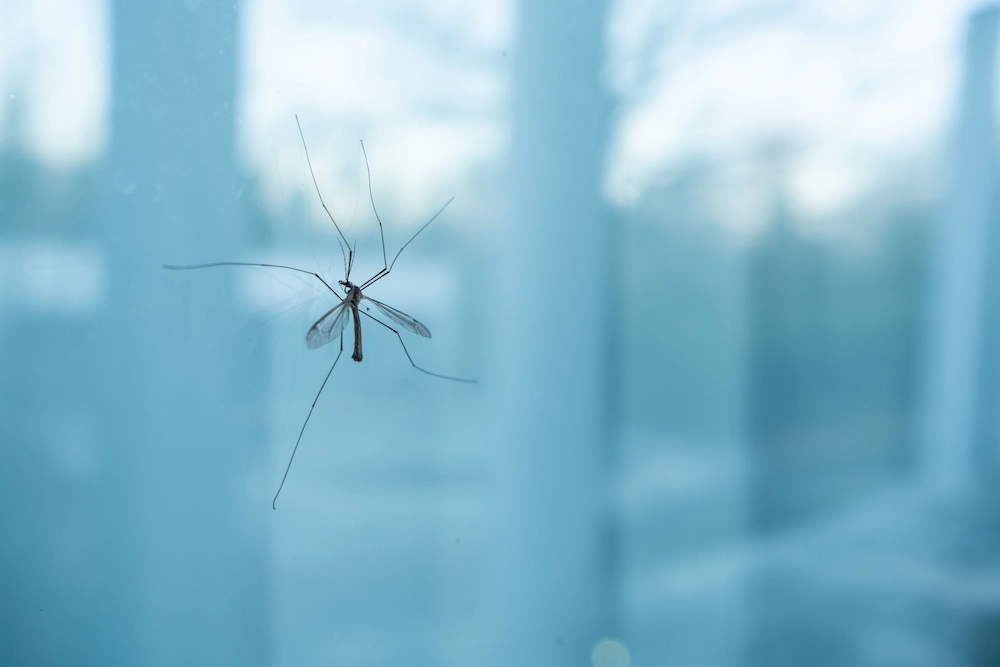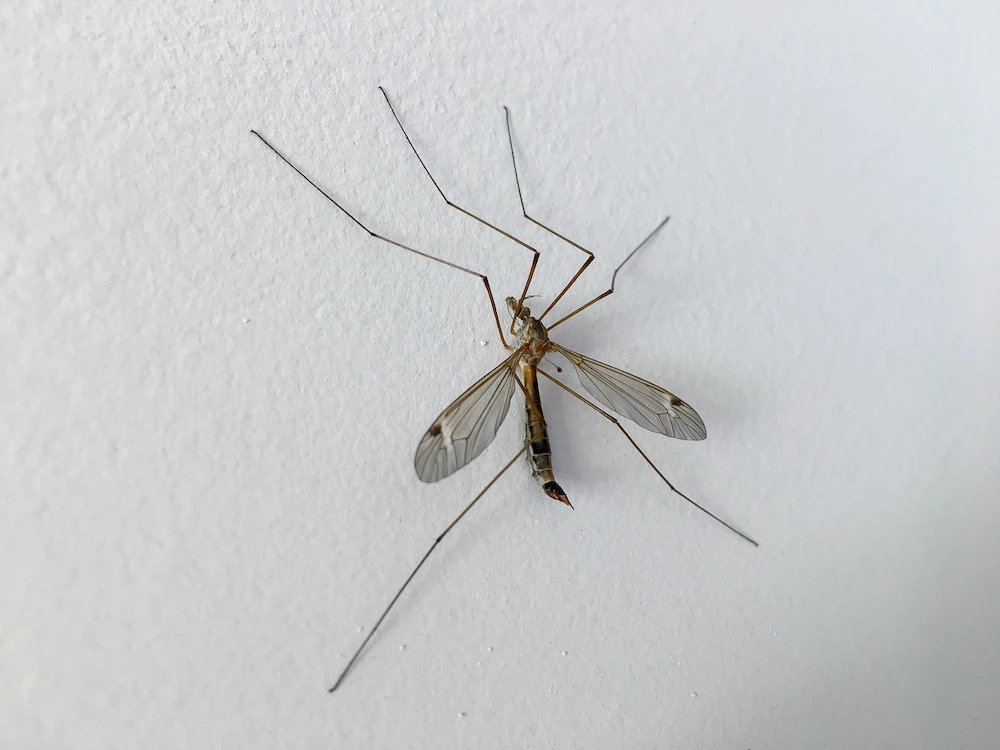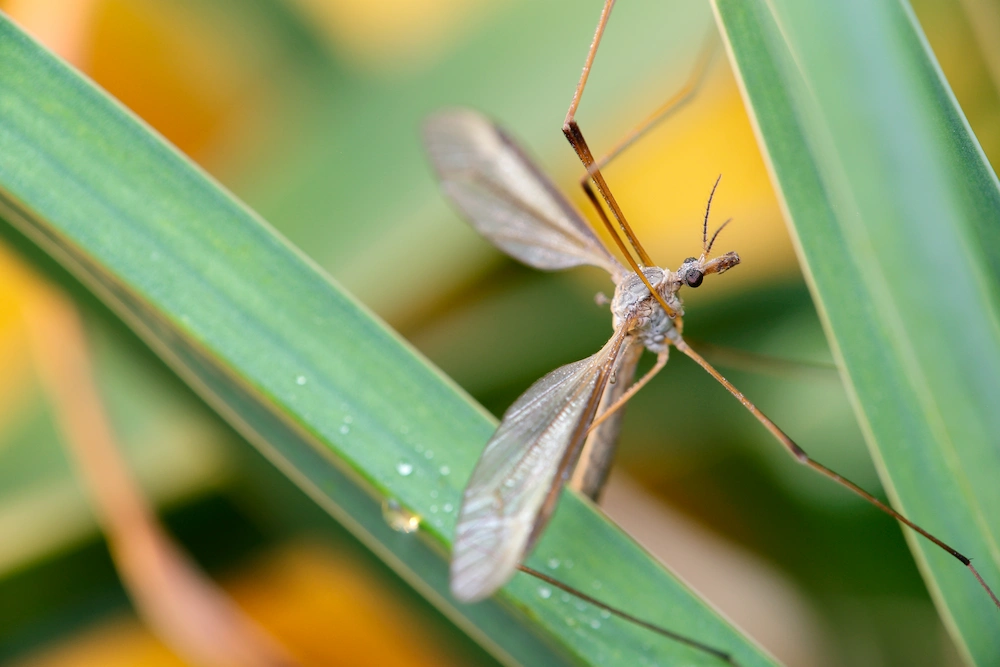Mosquito Hawks Are Boring Insects
Mosquito Hawks Are Boring Insects
Summary: Mosquito hawks (or crane flies) are harmless pests that look scarier than they actually are. This blog explores the short life of a mosquito hawk in order to learn how it spends its days. Each section is dedicated to a different aspect of the pest’s life, including their appearance and life span, mating process, nickname backstory, and environmental impact. Green Pest Services customizes its treatment plans to fit each customer’s needs.
As terrifying as the idea of massive bugs is, it is true that some species are gentle giants. Praying mantises and daddy longlegs are common examples, but we’re turning our focus to another large pest: the crane fly. You might know this insect by its interesting nickname of “mosquito hawk.”
There are still some questions regarding the crane fly’s existence since it has such a short life span. But we do know a lot about their brief days, so let’s explore the strange habits and misleading nickname (spoiler alert!) of the crane fly.
What Do Crane Flies Even Do?

These insects love warm, tropical climates, so they’re more of a summertime pest. They live for anywhere from two to fifteen days, and spend most of their lives as larvae. The larvae — also known as “leatherjackets” — eat a lot in order to fatten their strong bodies. In January and February, leatherjackets hide under crisp leaves or submerge along the banks of ponds and streams. They eat decaying matter, like rotting wood and vegetables, to build up their fat.
Leatherjackets are often too small to see, but adult mosquito hawks don’t like being the center of attention either. They are about two inches long with six legs and two thin wings. Crane flies are drawn to light, probably because of their giant eyes. They also like the water and can skate across it because their waterproof hairs prevent them from sinking. That’s about the only fun that mosquito hawks have, as they just live long enough to mate and produce eggs.
Meet Your Match

Luckily for crane flies, they naturally know as adults to find a mate ASAP before they die a few days later. Males fly around to spread pheromones for females to find, then the males die in a different area after they actually mate. The females lay their eggs on the bank of a pond or in moist soil, then die right after. They may not eat much as adults, but with this quick process, there’s not much of a need. The amount of food they eat as leatherjackets is enough to carry them through adulthood.
If you’re interested in studying the crane fly that’s fluttering around the garage, there are distinct features that help us distinguish between males and females. The female has an elongated body for storing eggs, while the male has a round body and longer antennae. Male crane flies also fly in erratic spurts, but females fly pretty straight. They both have a short life span, so you won’t see the same mosquito hawks flying around for too long.
The Faulty Nickname

Alright, it’s time to talk about it. The “mosquito hawk” nickname doesn’t have any truth to it because adult crane flies don’t eat mosquitoes! The big insects swarm lights, along with other pests, so it’s easy to believe that they’re drawn to the food sources. But crane flies don’t have the necessary mouth parts for eating mosquitoes or any other insects, so they aren’t carnivorous creatures in the slightest. Their size might be enough to scare away other insects without even trying!
This fact is also good news for us since crane flies don’t sting or bite anyone. The adult insects hardly eat anything, so they usually just flutter around and mind their own business. The only foods they might enjoy are dew, nectar, or honey water. They technically pollinate flowers as they look for nectar, but not nearly as much as bees. The harmless nature of mosquito hawks means that you’re welcome to leave them alone when you see them, but we understand the impulse to squash them.
Impact on the Environment

It’s important to note that crane flies are helpful to the environment, despite the fact that they don’t do much. The larvae enriches the soil they’re within since they break down the decaying matter they feed upon. This allows the plants to retain nutrients and thrive. For instance, the decomposing leaves that leatherjackets eat would otherwise suffocate the living plants as the leaves pile up. The healthier the soil, the happier our plants will be!
Crane flies are also important food sources (but don’t tell them) for other animals. Amphibians, birds, insects, and reptiles all enjoy mosquito hawks as a protein-filled snack. These insects make for great fish bait because fish — especially trout — love crane flies. Fun fact: crane flies are the model for many fishing lure styles, as a lot of fish feast on protein-filled bugs. These insects don’t swarm or gather with other pests, so the impact of mosquito hawks often flies under the radar — literally.
Great Pest Control Isn’t A Myth
Crane flies may not be dangerous pests, but any flying insects that try to invade your home aren’t welcome guests. The licensed technicians of Green Pest Services are prepared for any pest problem you have. We start every service with a full inspection of the property, then use our discoveries to create a treatment plan customized to fit your needs. Our treatments are targeted to eliminate the present pests and prevent future ones.We leave no pest untreated once we’re on the scene. For more information on our reliable services, contact our caring team today!
Citations
Hume, L.B. (2021, July 2). The crane fly: A skeeter eater? Country Roads. Available at https://countryroadsmagazine.com/travel/outdoor-adventures/the-crane-fly-a-skeeter-eater/ (Accessed on October 28, 2024).
Merchant, M. (2016, March 15). Crane flies, not mosquitoes. Texas A&M AgriLife Extension. Available at https://citybugs.tamu.edu/2016/03/15/crane-flies/ (Accessed on October 28, 2024).
Mertz, L. (2015, August 17). Mosquito hawk? Skeeter eater? Giant mosquito? No, no, and no. Entomology Today. Available at https://entomologytoday.org/2015/08/17/mosquito-hawk-skeeter-eater-giant-mosquito-no-no-and-no/ (Accessed on October 28, 2024).
Keep Pests Out of Your Holiday Gatherings
Keep Pests Out of Your Holiday Gatherings Keep Pests Out of Your Holiday Gatherings Summary: The holiday season is all about good food [...]
Cold Weather vs. Warm Weather Infestations: How Temperature Shapes Pest Activity
Cold Weather vs. Warm Weather Infestations: How Temperature Shapes Pest Activity Cold Weather vs. Warm Weather Infestations: How Temperature Shapes Pest Activity Summary: [...]
Garden Pests Do Not Hibernate Indoors – How They Attack Houseplants And What To Do
Garden Pests Do Not Hibernate Indoors – How They Attack Houseplants And What To Do Garden Pests Do Not Hibernate Indoors – How They Attack [...]
The Scariest Pests (And Why They Freak Us Out)
The Scariest Pests (And Why They Freak Us Out) The Scariest Pests (And Why They Freak Us Out) Summary: A practical, homeowner-friendly guide [...]
Favorite Foods of Rats and Mice
Favorite Foods of Rats and Mice Favorite Foods of Rats and Mice Summary: Rats and mice are surprisingly picky about what they eat—especially [...]
Where Do Spiders Like to Hide? A Locals’ Guide to Sneaky Spider Spots (and What to Do About Them)
Where Do Spiders Like to Hide? A Locals’ Guide to Sneaky Spider Spots (and What to Do About Them) Where Do Spiders Like to Hide? [...]

